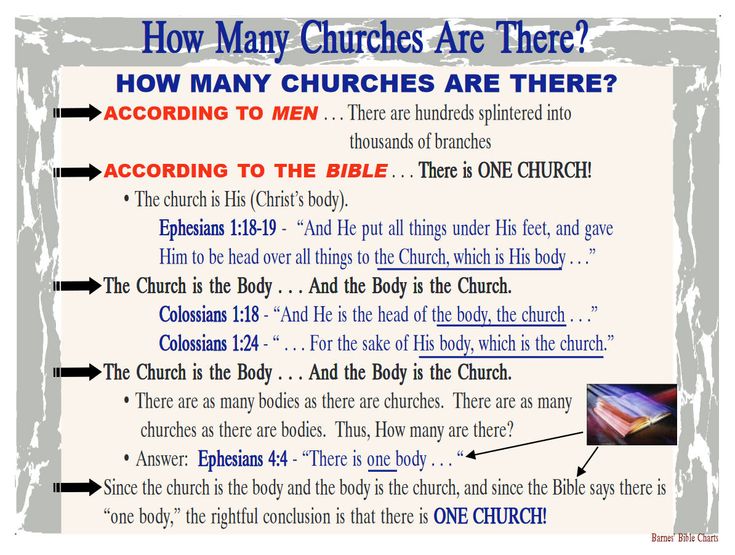Throughout history, the Christian faith has flourished and diversified, yielding a myriad of denominations, congregations, and ultimately, churches. The question, “How many churches are there in the world?” invites inquiry into the fragmentation and breadth of Christian practice today. With estimates suggesting a staggering number, this statistic encapsulates the complexity and variety inherent within Christianity itself.
The multiplicity of churches can be traced back to significant historical schisms, theological disputes, and cultural adaptations. The Protestant Reformation in the 16th century marked a pivotal moment, birthing numerous denominations such as Lutherans, Baptists, and Presbyterians. Each faction emerged with its distinctive beliefs and practices, aiming to address what they perceived as foundational issues within the Church of Rome. This period catalyzed a paradigm shift in Christian worship and governance, ultimately leading to the establishment of thousands of independent churches worldwide.
Presently, it is estimated that there are over 44,000 distinct Christian denominations globally. This number encompasses a wide array of church types, ranging from well-established institutions such as the Catholic Church to myriad smaller, independent congregations that operate in local contexts. This figure is confounding, prompting reflection on the reasons behind such diversity.
One primary factor contributing to the vast number of churches stems from the interplay of culture and faith. Christianity is not a monolithic entity; it thrives in diverse cultural landscapes. For example, churches in South America often embody vibrant expressions of local customs and traditions, intermingling indigenous rituals with Christian doctrine. Similarly, in Africa, Christianity has grown rapidly, resulting in a proliferation of churches that reflect the various ethnic and cultural identities of the continent’s populace. Such adaptations can lead to the formation of new denominations or fellowships, expanding the total count of churches.
While the sheer number of churches might appear overwhelming, it signifies something profound about human spirituality. Each church caters to the particular spiritual needs and convictions of its congregation, providing a sense of community, belonging, and identity. They often serve as hubs for social services, educational initiatives, and charitable endeavors, fostering a network of support that extends beyond mere worship. In essence, churches are not only places of faith but are also instrumental in shaping cultural narratives and communal values.
Furthermore, the rise of megachurches, defined as congregations with over 2,000 attendees, has revolutionized the landscape of worship in the modern era. These institutions frequently employ sophisticated outreach programs and contemporary worship methods, attracting vast numbers of attendees. Yet, their proliferation raises questions about the nature of community and authenticity in faith practices. Are these large congregations fostering genuine spiritual growth, or are they more focused on numbers and spectacle? This tension underscores the diverse expressions of worship, emphasizing the need for believers to seek intentional, meaningful engagement within their communities.
Another significant aspect influencing the count of churches is the phenomenon of church planting, a strategy that aims to establish new congregations in areas where Christianity may be less prevalent. Evangelical movements particularly promote this approach, driven by the belief in the Great Commission—that Christians are called to spread the gospel. This surge in church planting has been particularly notable in regions such as Asia and the Middle East, where the presence of Christianity is often a minority in the midst of other dominant faiths. This missionary zeal contributes not only to numerical growth but also to a theological diversity that reflects varying interpretations of scripture and practice.
Additionally, the development of independent and non-denominational churches has become increasingly prevalent. In these settings, congregations often prioritize a personal relationship with Jesus Christ over adherence to specific doctrinal tenets dictated by larger denominations. The appeal of such a model lies in its perceived flexibility, allowing congregations to adapt rapidly to the needs of their communities. Yet, this approach has also led to a fragmentation of the faith, which can complicate conversations around shared beliefs and unity within the church body.
The question of how many churches exist thus taps into broader theological and existential inquiries. What does it mean to be part of the body of Christ when so many divergent expressions flourish? This reality evokes the underlying necessity for dialogue among denominations, as well as the challenge of addressing conflicting beliefs with charity and grace. The varied denominations can serve as reminders of humanity’s richly textured spiritual journey, encouraging individuals to explore differing perspectives while seeking common ground.
In conclusion, the estimated 44,000 churches across the globe represent not just numerical diversity, but also a tapestry of faith woven through cultural influences, historical developments, and distinct convictions. Each church embodies unique stories of hope, struggle, and community, illustrating the multifaceted nature of Christianity. As believers navigate this vast landscape, it becomes imperative to foster understanding, compassion, and unity amidst diversity, recognizing that despite extensive differences, the ultimate goal remains a shared reverence for the divine and a commitment to love one another. This enduring mission transcends denominational lines, connecting congregations with the fundamental call to embody the love and grace of Christ in a fragmented world.



